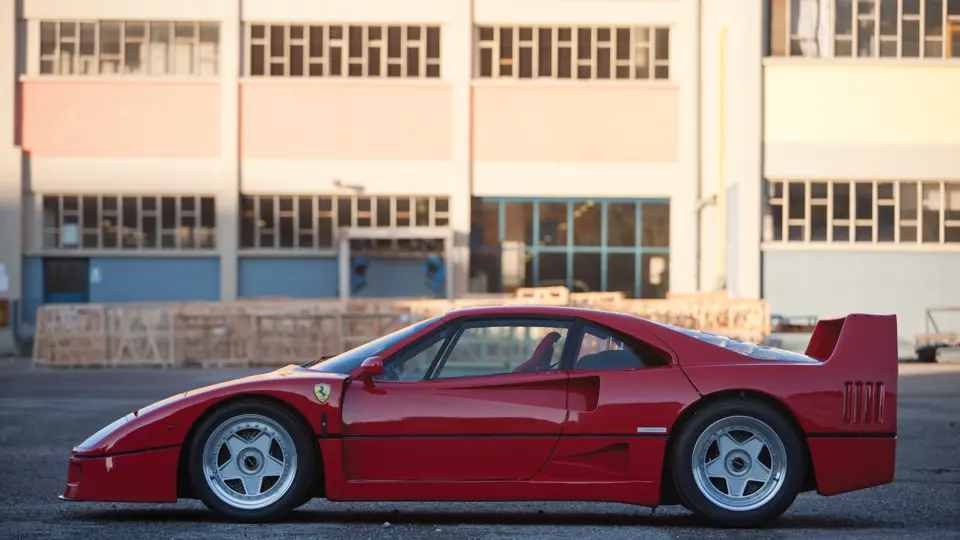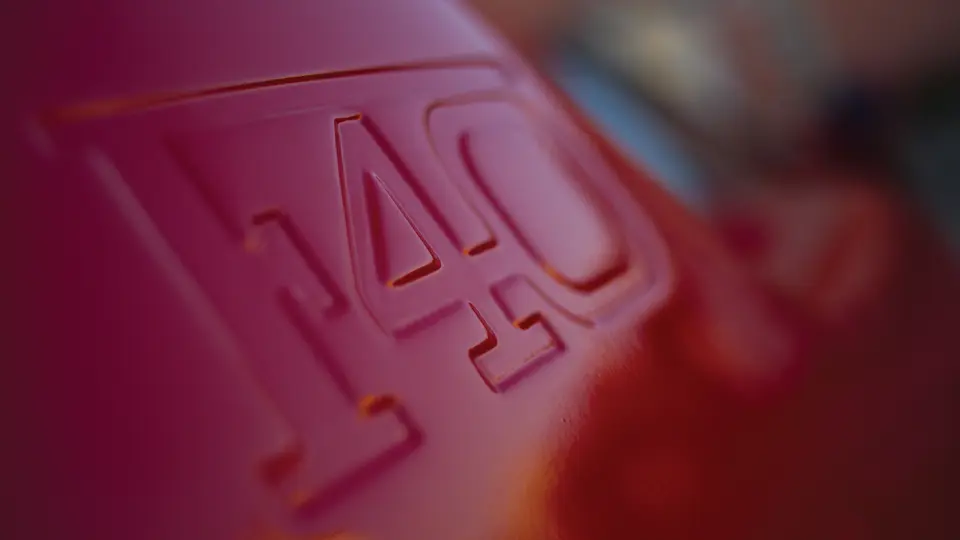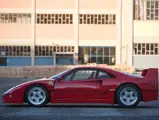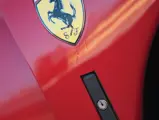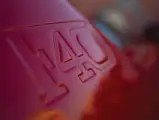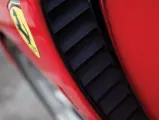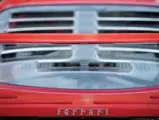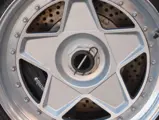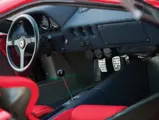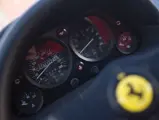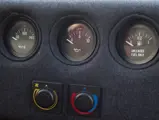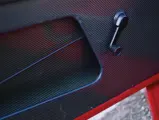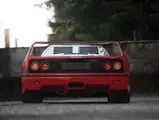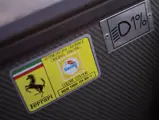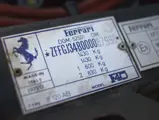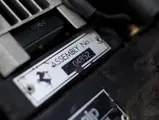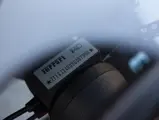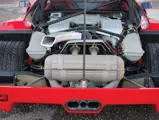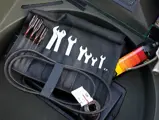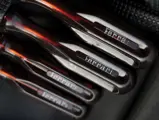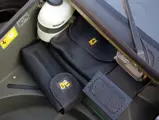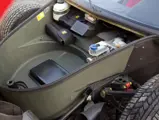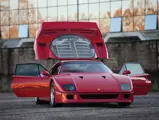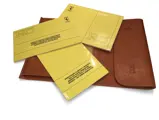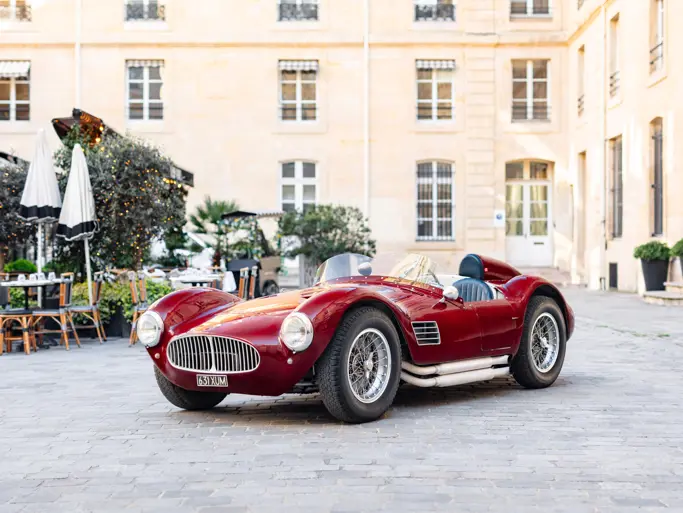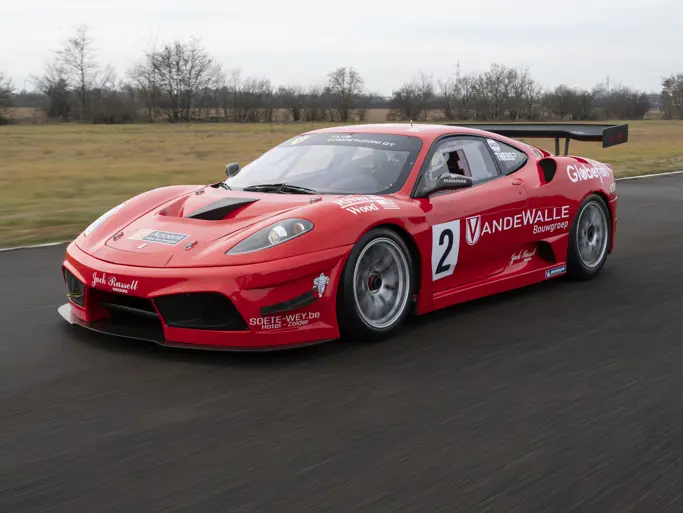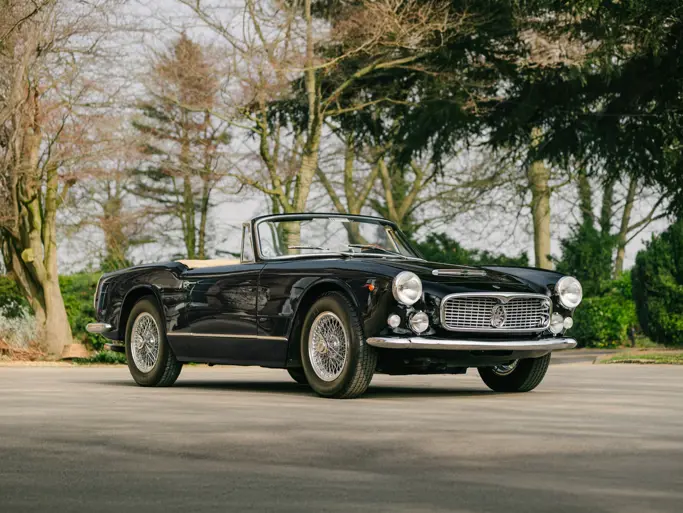
1990 Ferrari F40
{{lr.item.text}}
€1,176,000 EUR | Sold
{{bidding.lot.reserveStatusFormatted}}
- Single-family ownership since new, with less than 1,200 kilometres recorded
- “Cat, Non-Adjust” example; includes books and tools
- Submitted for Ferrari Classiche certification
- Recently serviced by Rossocorsa S.r.l
- Dans la même famille depuis l'origine, moins de 1 200 km parcourus
- Exemplaire non catalysée, à suspension non pilotée ; comporte ses outils et manuels
- Soumise à la classification de Ferrari Classiche
- Récemment révisée par Rossocorsa S.r.l
478 bhp, 2,936 cc DOHC 90-degree V-8 engine with two turbochargers and Weber-Marelli engine management and fuel injection, five-speed manual gearbox, tubular steel and carbon composite chassis, independent double-wishbone suspension with Koni hydraulic shock absorbers and front and rear anti-roll bars, and four-wheel steel ventilated disc brakes. Wheelbase: 2,450 mm.
Moteur V-8 à 90°, 2 936 cm3, 478 ch, deux ACT par banc, deux turbocompresseurs, système Weber-Marelli de gestion du moteur et de l'injection, boîte manuelle cinq rapports, châssis composite en acier et carbone, suspension indépendantes par doubles triangles et amortisseurs hydrauliques Koni réglables, barres antiroulis avant et arrière, freins à disques ventilés en acier sur les quatre roues. Empattement: 2 450 mm
It was a big year for Enzo Ferrari in 1987. Not only did he celebrate his 90th birthday, but more importantly to him, it was 40 years since he built his first car.
A year earlier, Enzo was reported to have said, “Let’s make something special for next year’s celebrations in the way we used to do it”. That special car would be the last one that “The Grand Old Man”, as he was affectionately known by then, would see launched from his prized stable.
The name was suggested by a friend of Ferrari, Gino Rancati, who after having just left Ferrari’s office after a meeting, met with Razelli, the general manager, and Razelli showed him the new Ferrari that would be presented at the Frankfurt Motor Show. Rancati asked what its name would be, and Razelli replied that they had two or three possible names, but asked what he would call it. Rancati replied, “Since Ferrari’s biggest market is the United States, and since it is now forty years since the first Ferrari car has appeared, it should have an English language name, for example ‘Ferrari Forty’.”
Rancati received a silver plaque with the inscription, “To Gino Rancati for a brilliant idea”. On the left was a black Cavallino Rampante and on the right “F40 June 1987”.
An accompanying letter said, “Dear Rancati, with this plaque I want to commemorate our meeting on the 4th June, when you kindly contributed to the choice of name for the GT car we presented at the Frankfurt Motor Show. Your contribution has produced excellent results—the ‘F Forty’, based on the idea of forty years of Ferrari cars, identifies and personalises the fastest Ferrari GT. Kindest regards, G.B. Razelli”. Next to this, in slightly shaky script and violet ink, was, “To Signor Gino, Ferrari”.
The F40 was introduced as the fastest road car ever built. It was as simple as that, and no one could argue. Its top speed was claimed as 201.3 mph (323 km/h), which was the first time any road car had bettered 200 mph. It could accelerate from standstill to 60 mph (97 km/h) in 3.5 seconds or to twice that speed in just 11.5 seconds. The F40 continued the great Ferrari tradition of bridging the gap between road and racing cars.
The F40’s three-litre V-8 engine was derived from its predecessor, the 288 GTO. With bigger bores and a shorter stroke, the longitudinally mounted four-cam, with twin IHI turbochargers, was a screamer of an engine, as it could produce 478 brake horsepower at 7,000 rpm, redlining at a heart stopping 7,700 rpm. The influence of the Formula One program and the grand prix workshops could be seen in the cutting-edge composite materials, carbon fibre, and Kevlar that were utilised. With a cost of nearly £200,000, Ferrari expected to sell several hundred F40s. They underestimated demand for the greatest supercar ever built. The first F40s delivered demanded premiums of up to three times their cost. Around 1,500 were eventually produced, and the F40 became the most profitable car in Ferrari history.
The F40 presented here has single-family ownership from new and has clocked up less than 1,200 kilometres since it was collected from Ferrari Concessionaire in Bari. Mr Patella then drove the car directly to his summer house in Bari and completed only a handful of laps around the local town to show his friends. Shortly after the car arrived at his summer house, having covered only roughly 300 kilometres on the open road, Mr Patella raised the car and put it on axle stands in his garage. As a Fiat dealer himself, Mr Patella knew the importance of regular maintenance and frequently ran the car up to temperature and cycled through the gears with the car on stands. With the tachometer taking its reading from the gearbox, this routine maintenance added significantly to the odometer reading.
Chassis number 87990 has recently received new Pirelli tyres and a service at Rossocorsa S.r.l. It has also been submitted for Ferrari Classiche certification. This car presents a rare opportunity to obtain the holy grail of supercars with only single-family ownership from new and minimal mileage.
Enzo Ferrari’s last great statement was the F40, and it was and still is uncompromisingly stunning. In his own words, it is “the best Ferrari ever”.
L'année 1987 fut une année importante pour Enzo Ferrari. Non seulement célébrait-il ses 90 ans, mais en plus—et c'était pour lui le plus important—40 ans s'étaient écoulés depuis la fabrication de sa première voiture.
Un an auparavant, Enzo aurait affirmé : « Faisons quelque chose de spécial pour les célébrations de l'année prochaine, à notre façon ». Cette voiture spéciale allait être la dernière dont « il Grande Vecchio », comme il était affectueusement surnommé à cette époque, vivrait le lancement.
Le nom de cette voiture a été soufflé par un ami de Ferrari, Gino Rancati. Après avoir quitté le bureau de Ferrari à la suite d'une réunion, il est allé voir Razelli, le directeur général, qui lui a montré la nouvelle Ferrari qui devait être présentée au Salon de Francfort. Rancati lui a demandé quel nom était prévu, ce à quoi Razelli a répondu que deux ou trois appellations étaient encore en lice. Mais comment appellerais-tu, toi-même, cette voiture, a interrogé Razelli. Et son interlocuteur lui a répondu, « Le plus gros marché, pour Ferrari, étant les États-Unis, et comme il s'est écoulé 40 ans depuis la première Ferrari, elle devrait avoir un nom anglais, quelque chose comme ‘Ferrari Forty’ ».
Rancati a reçu une plaque en argent portant l'inscription, « A Gino Rancati pour sa brillante idée », avec à gauche un cheval cabré et, à droite, « F40 juin 1987 ».
La lettre accompagnant la plaque précisait : « Cher Rancati, par cette plaque j'aimerais commémorer notre réunion du 4 juin, lorsque tu as aimablement contribué à trouver un nom pour la berlinette que nous devions présenter au Salon de Francfort. Ta contribution a produit d'excellents résultats : le ‘F Forty’, basé sur l'idée des 40 ans des voitures Ferrari, identifie et personnalise la plus rapide des GT Ferrari. Amicales salutations. G.B. Razelli ». Et à côté, à l'encre violette légèrement tremblante, « A Signor Gino, Ferrari ».
La F40 était présentée comme la voiture de route la plus rapide jamais produite. C'était une affirmation d'une grande simplicité, que personne ne pouvait contester. La vitesse de pointe annoncée était de 323 km/h, et c'était la première fois qu'une voiture de route dépassait 200 mph (320 km/h). Elle pouvait accélérer de 0 à 100 km/h en 3,5 secondes et atteindre 200 km/h en 11,5 secondes. La F40 poursuivait la grande tradition Ferrari de combler le fossé séparant les voitures de course et de route.
Le V8 de 3 litres de la F40 était dérivé de celui de sa devancière, la 288 GTO. Avec un alésage plus important et une course plus courte, ce moteur longitudinal quatre arbres, avec ses deux turbos IHI, était extrêmement puissant, avec 478 ch à 7 000 tr/mn et une zone rouge à 7 700 tr/mn. L'influence du programme de Formule 1 et de l'atelier de Grand Prix pouvait être détectée à travers les matériaux avant-gardistes utilisés, comme la fibre de carbone et le Kevlar. Avec un prix de vente de presque 200 000 $, Ferrari pensait vendre quelques centaines de F40, mais a sous-estimé la demande pour cette berlinette d'exception. Les premières F40 ont parfois entraîné des prix de revente allant jusqu'à trois fois le prix de base. Quelque 1 500 exemplaires sont finalement sortis d'usine et la F40 est devenue la Ferrari la plus rentable de l'histoire de la marque.
La F40 que nous présentons est toujours restée dans la même famille et a parcouru moins de 1 200 km depuis qu'elle a été achetée au concessionnaire Ferrari de Bari. M. Patella a ensuite emmené la voiture directement à sa maison d'été dans la région, effectuant ensuite quelques tours du village pour montrer la voiture à ses amis. Peu de temps après avoir rallié la maison d'été et avoir donc parcouru environ 300 km sur route ouverte, M. Patella levait la voiture pour la poser sur un support spécial, dans son garage. Lui-même agent Fiat, il connaissait l'importance d'un entretien régulier et faisait régulièrement tourner la voiture, tout en montant les vitesses avec les roues tournant dans le vide. Ces exercices de routine ont contribué de façon significative à augmenter le kilométrage au compteur, branché sur la boîte de vitesses.
Ce châssis n°87990 a reçu récemment des pneus Pirelli neufs et a été révisé chez Rossocorsa S.r.l. La voiture a été aussi soumise pour une certification Ferrari Classiche. Elle représente une opportunité rare d'acheter le Graal des supercars, toujours resté dans la même famille et avec un kilométrage très faible.
La F40 est la dernière produite du vivant d'Enzo Ferrari ; elle était, et elle est toujours, incroyablement impressionnante. Selon ses propres mot « la meilleur Ferrari jamais construite ».

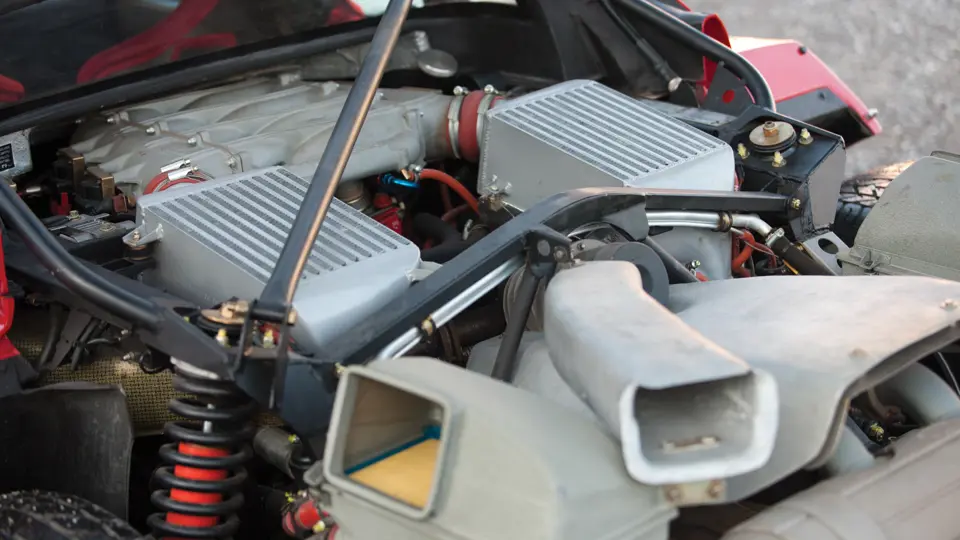
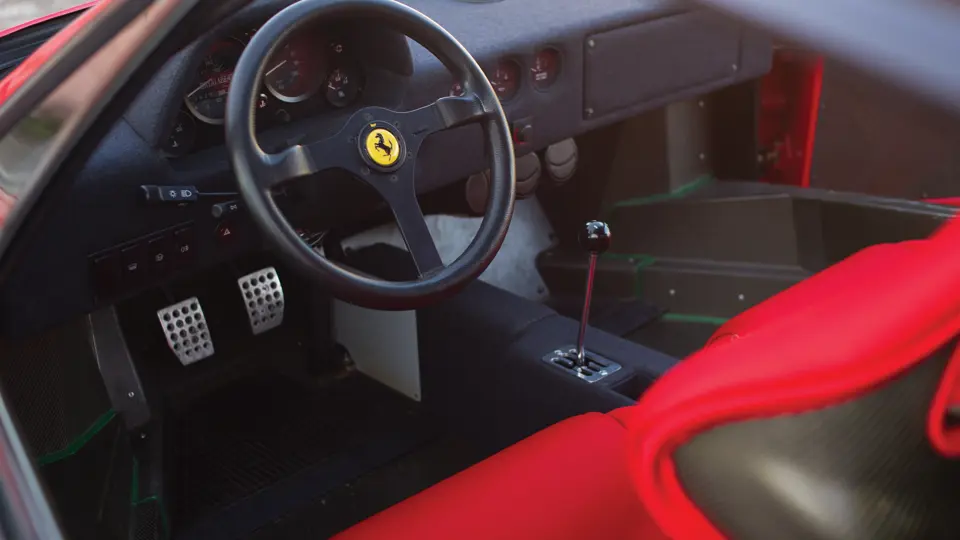

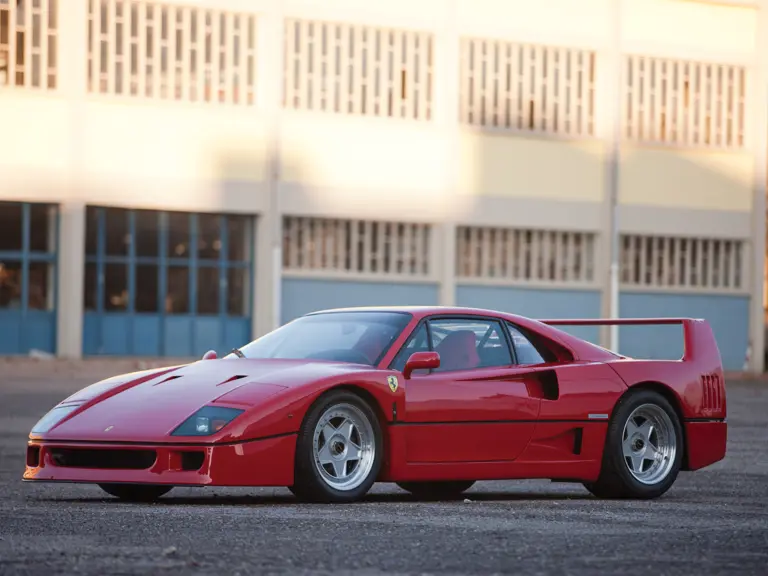
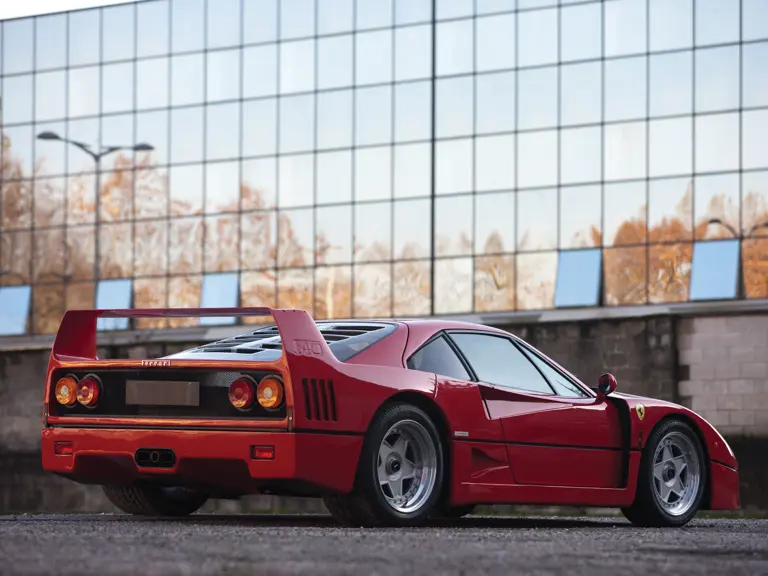
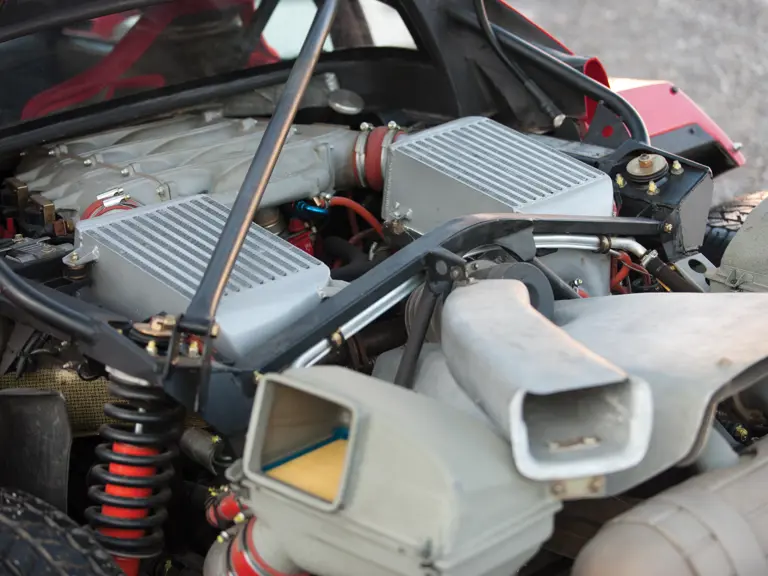

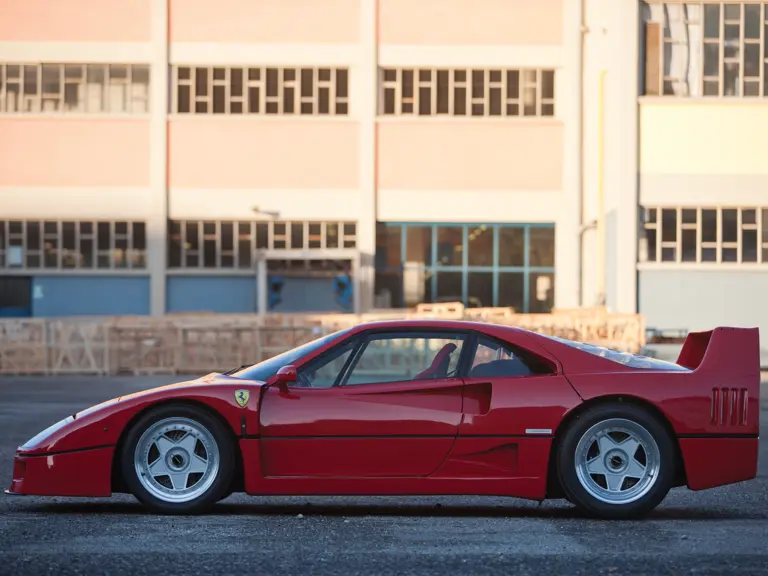
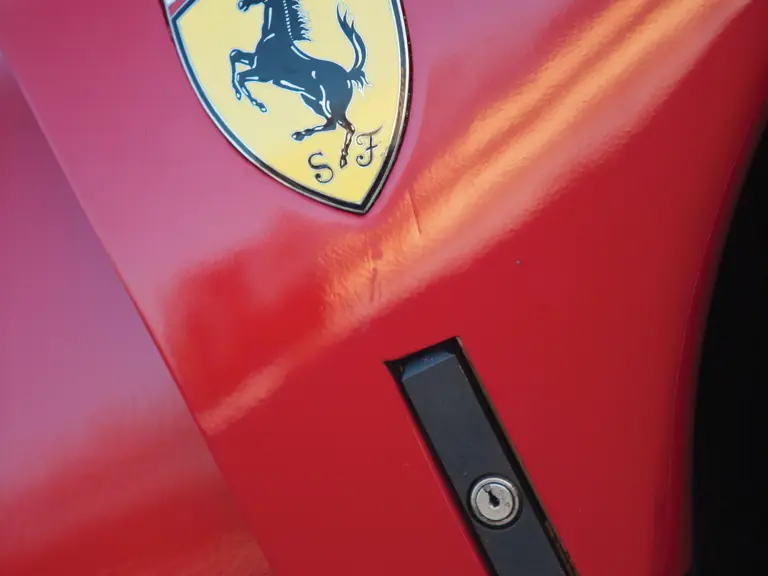
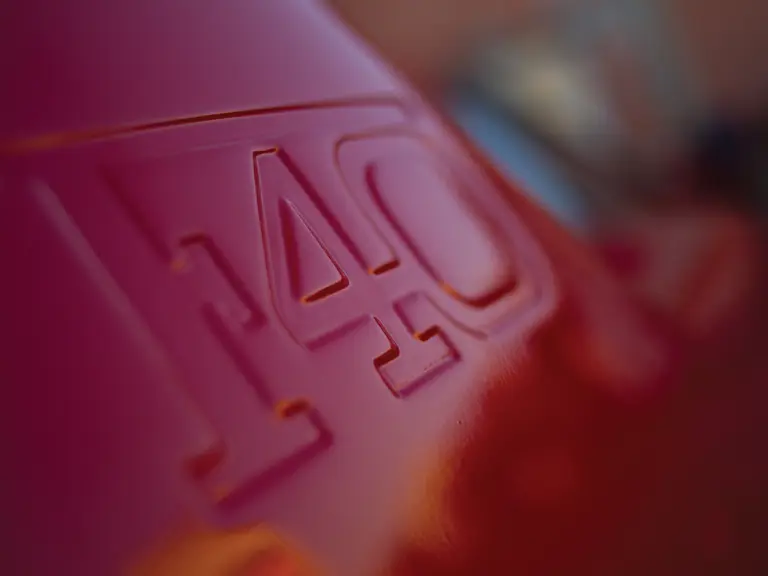
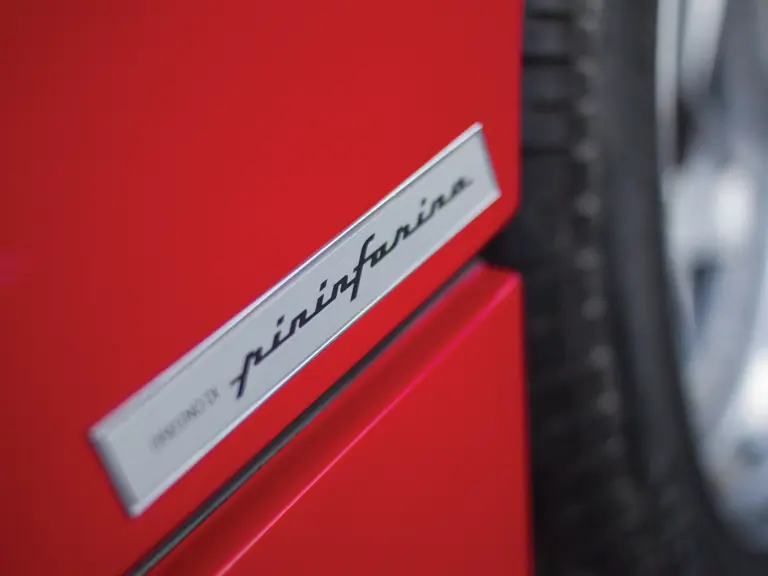
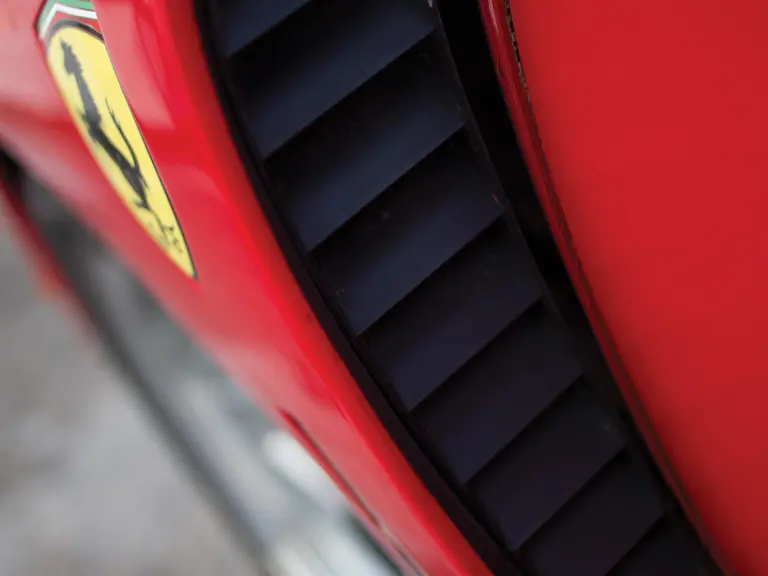
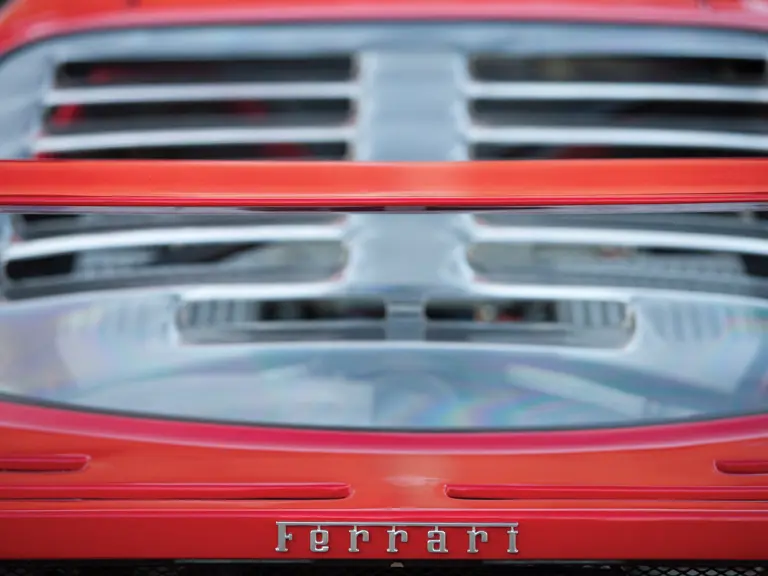
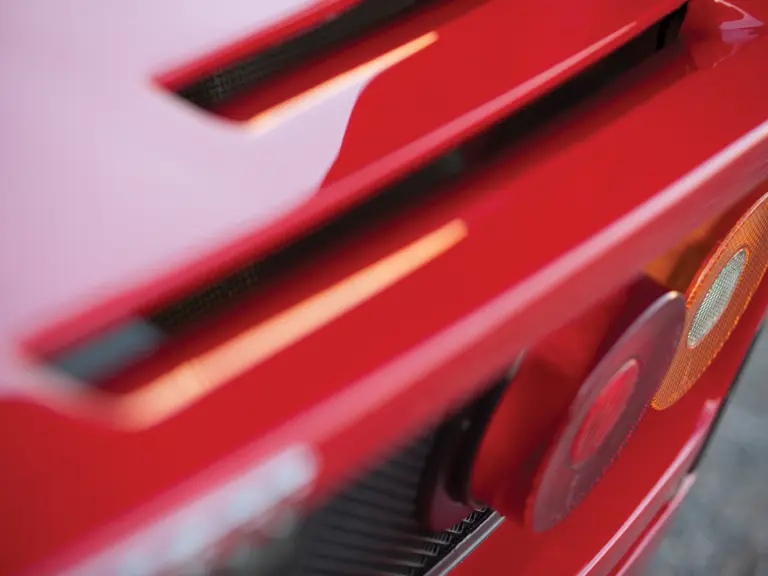
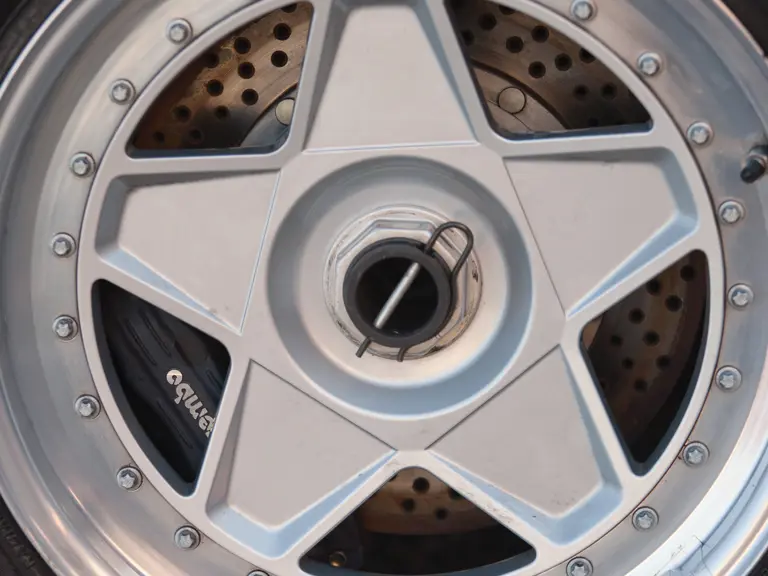

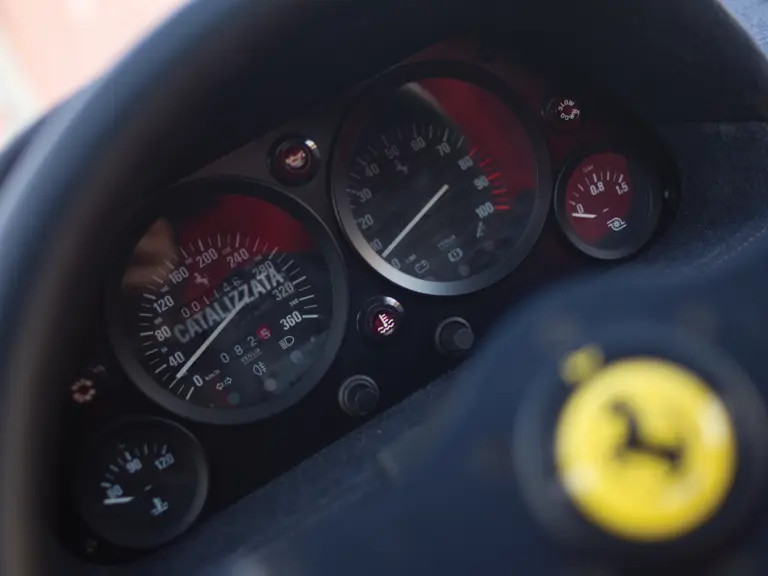
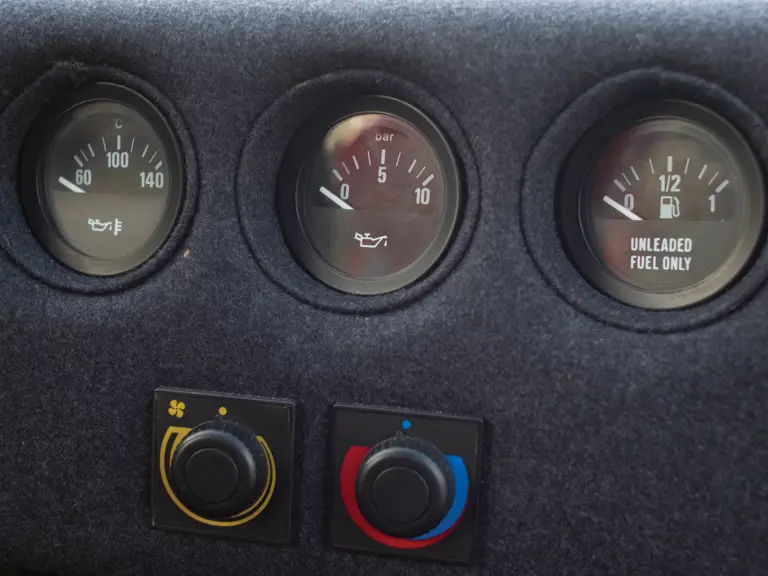
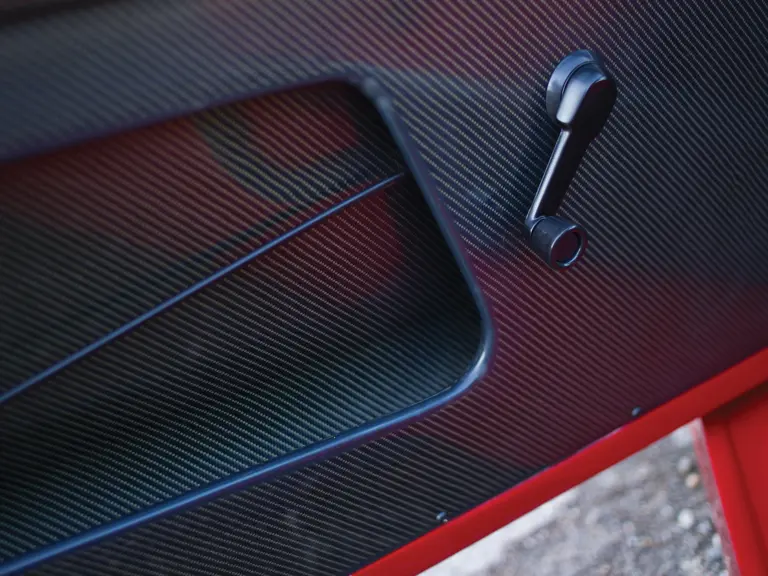
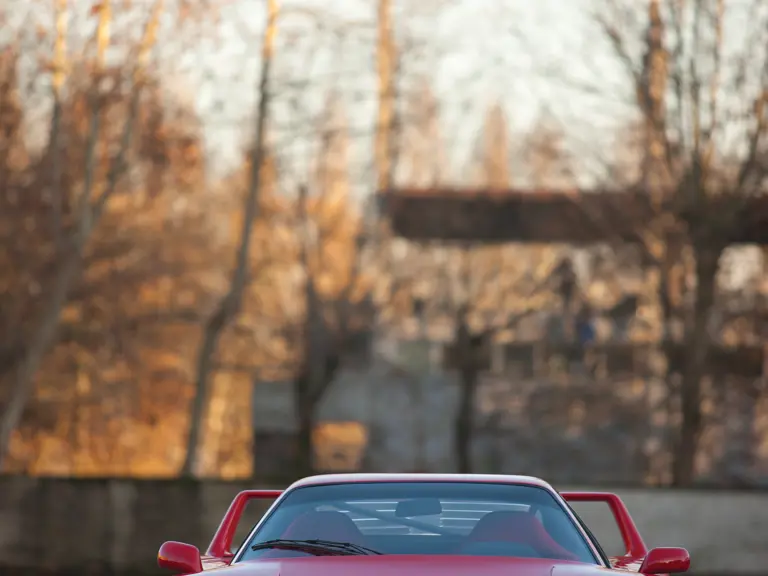
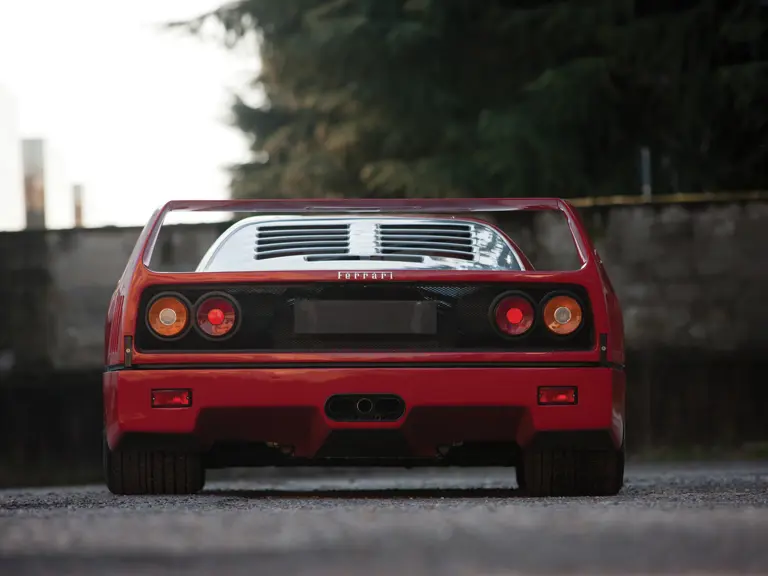
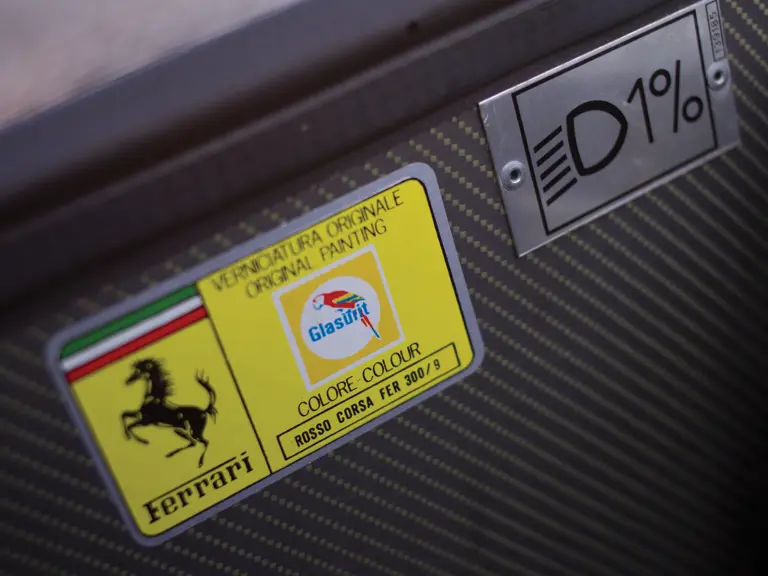
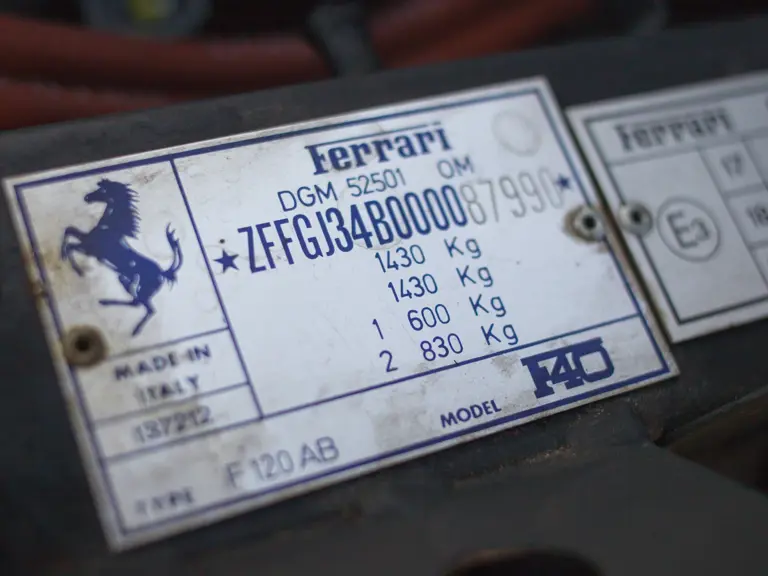
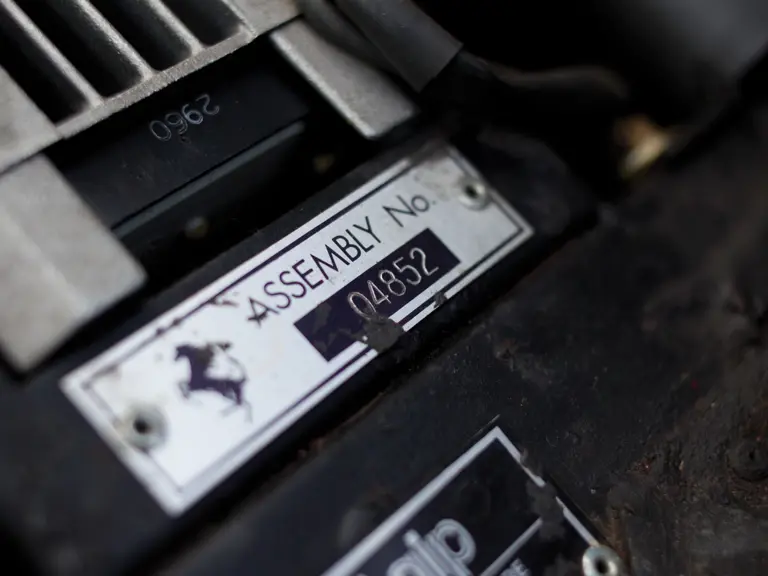
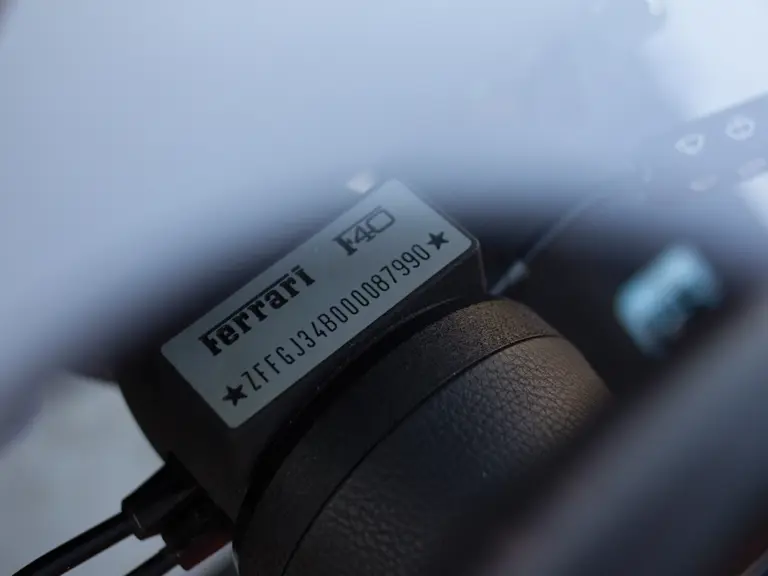
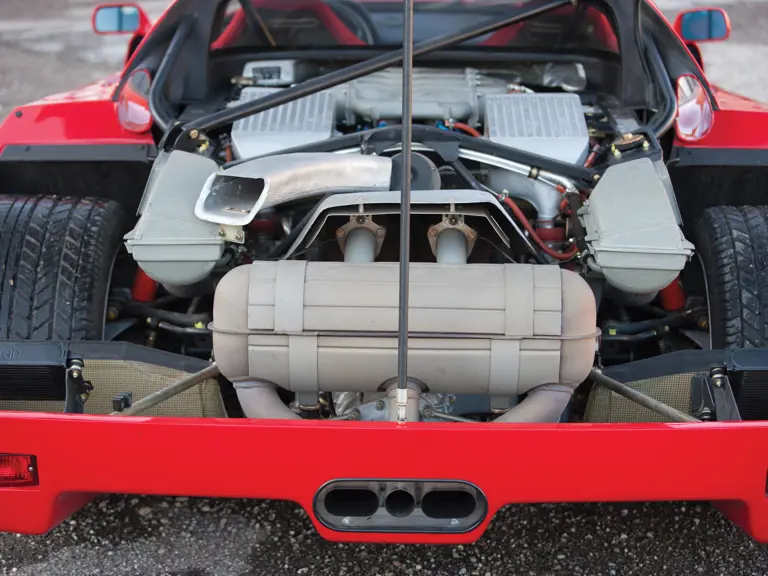
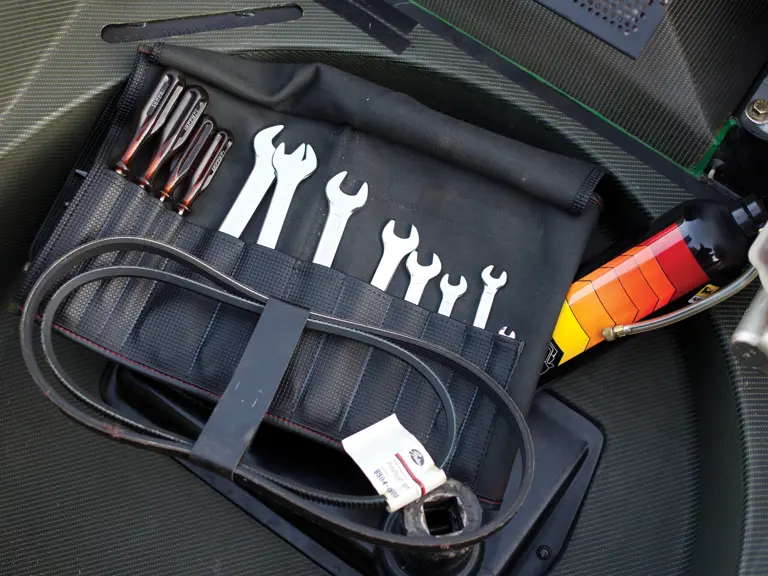
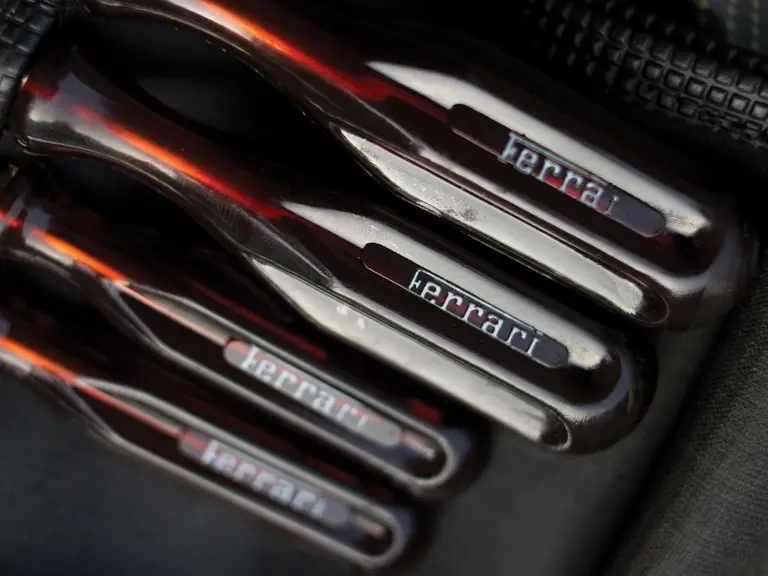

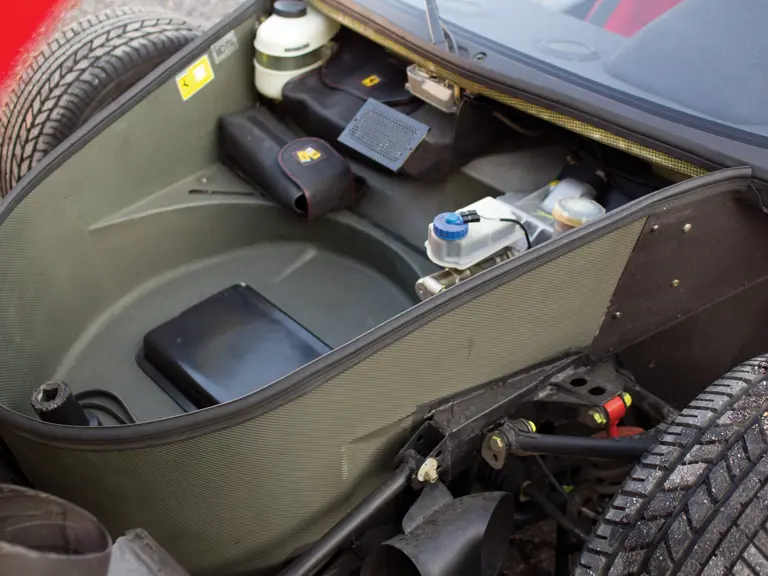
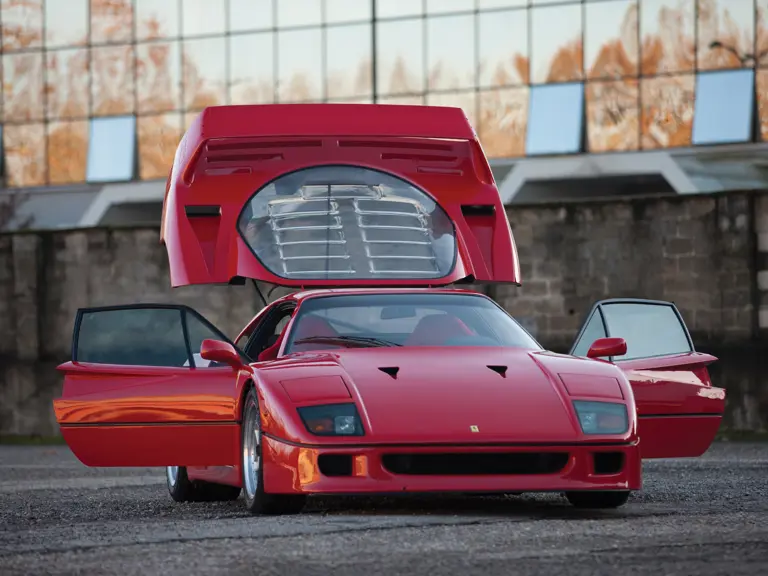
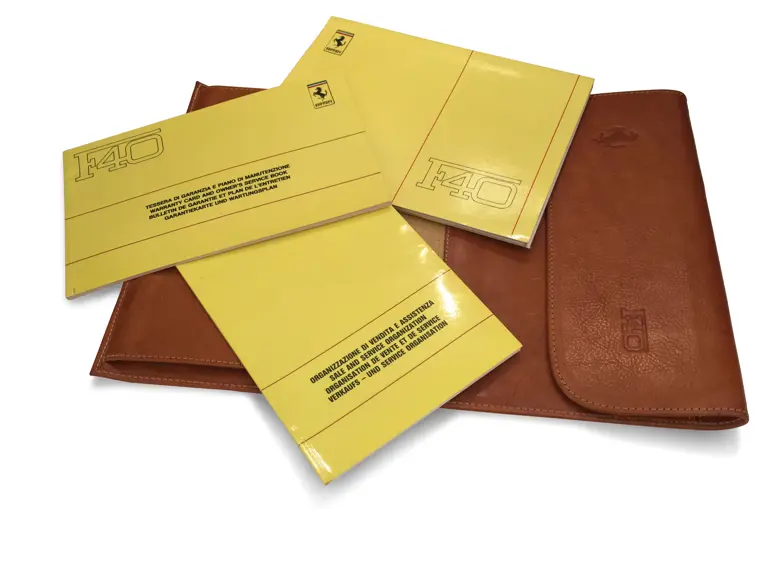
 | Paris, France
| Paris, France
